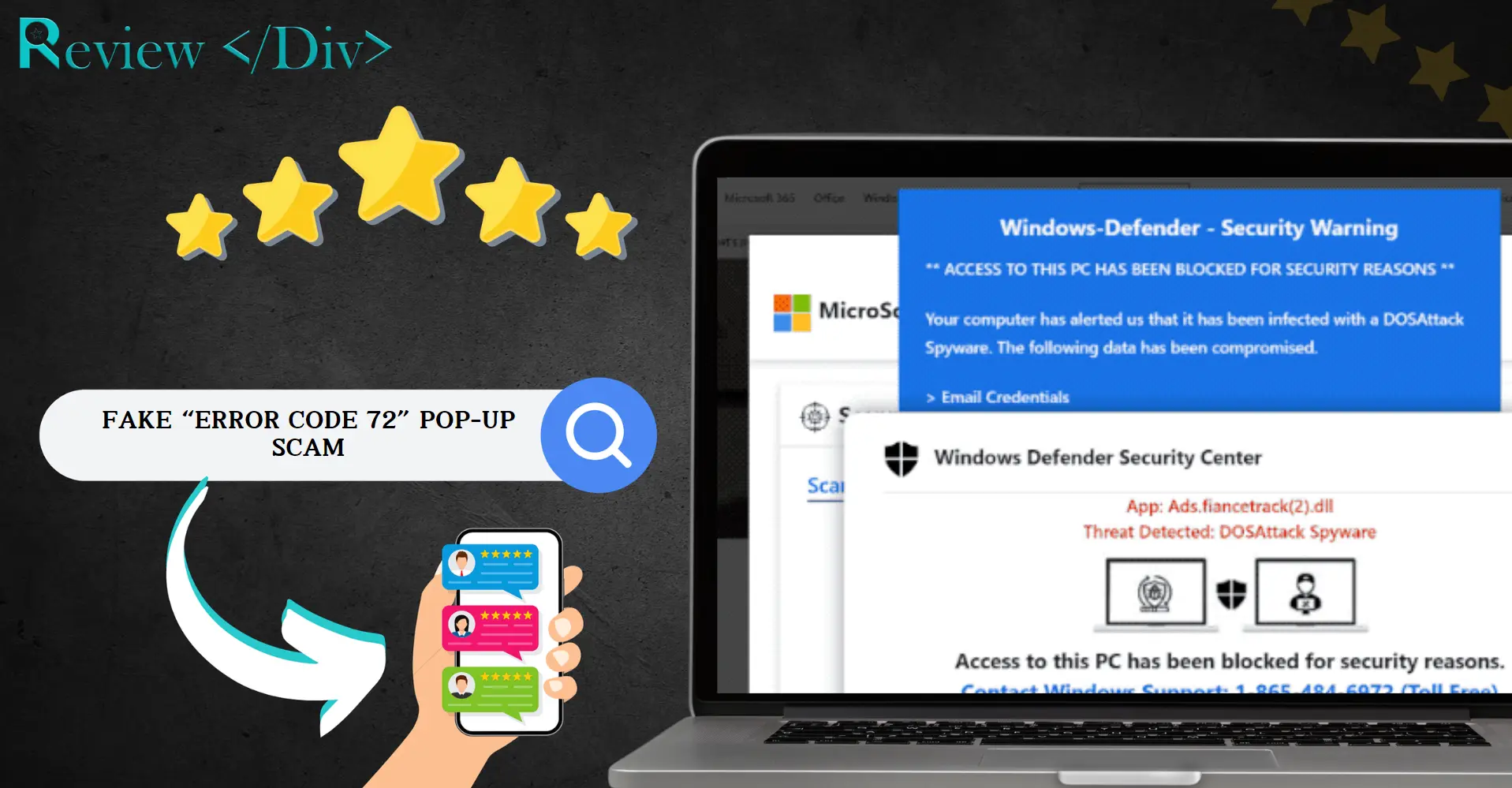As cybercrime evolves, tech support scams have become more refined, preying on trustful internet users. One such scam that has been circulating recently is the fake “Error Code 72” pop-up scam.
This article provides a complete look at how this scam works, the tactics used by scammers, and the steps you can take to protect yourself from falling victim.
“Error Code 72” Scam Overview
The “Error Code 72” scam is online fraud where scammers use fake pop-up alerts to trick people into thinking their computer has been infected with a virus or has a serious technical issue.
These fake alerts mimic genuine security warnings from trusted companies like Microsoft or Apple. Because the pop-ups use familiar logos and layouts, many users believe they are legitimate.
The scam’s goal is to create fear and urgency, which prompts victims to call a fake support number or download harmful software that gives the scammer control over their computer.
How does “Error Code 72” Scam Work?
The “Error Code 72” scam begins when a user unknowingly lands on an opposing website. This can happen by clicking on a suspicious link, downloading an infected file, or viewing a compromised ad.
Once on these sites, a pop-up message appears and gives a warning that “Error Code 72” has occurred which claims that the computer is infected with a virus like a Trojan horse.
The pop-up is created to look like a legitimate security alert from a well-known company, complete with official logos and technical language that makes it seem credible.
These fake alerts use scare tactics to create a sense of urgency and fear. The message says the computer is blocked, infected with multiple viruses, or that personal and financial information is at risk.
These alarming messages include a fake tech support phone number and urge users to call immediately. The panic created by such messages can make victims act quickly, without verifying the authenticity of the alert.
Once the victim calls the number, they speak to a scammer pretending to be a legitimate tech support agent. These scammers are adept at sounding professional and convincing the user that their computer has a serious issue.
The fake tech support representative requires the victim to install remote access software like TeamViewer or AnyDesk. If the victim complies, the scammer gains full access to their computer which allows them to manipulate files, install malware, and monitor the victim’s activity.
With remote access secured, the scammer usually runs fake diagnostic tests and shows fabricated results to convince the victim that their computer is hardly compromised. They then offer to “fix” the problems for a fee, which can range from a few hundred to several thousand dollars.
Beyond charging for fake services, scammers also steal sensitive information such as credit card numbers, bank account details, or personal data which leads to identity theft or financial fraud.
What to Do If You Have Fallen for the Scam?
If you have already fallen for the “Error Code 72” scam, it is important to act quickly to minimize the damage:
Disconnect Your Computer from the Internet: If you have given remote access to a scammer, immediately disconnect your computer from the Internet to stop them from accessing it further.
Change All Your Passwords: Change the passwords for all your online accounts, especially those related to financial transactions or containing personal information. Make sure to use strong, unique passwords and enable two-factor authentication (2FA) wherever possible.
Contact Your Bank: If you provided any financial information to the scammer, contact your bank or credit card company immediately. They can check your accounts for any unusual activity and help protect your money.
Seek Professional Help: Consider having your computer checked by a professional to ensure that all malware and unwanted software are completely removed. A cybersecurity expert can clean your system thoroughly and provide advice on how to stay safe online in the future.







